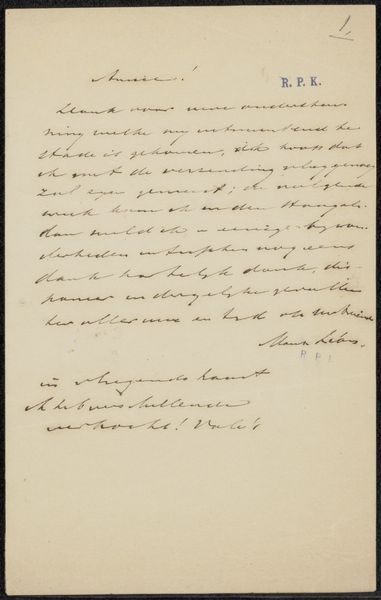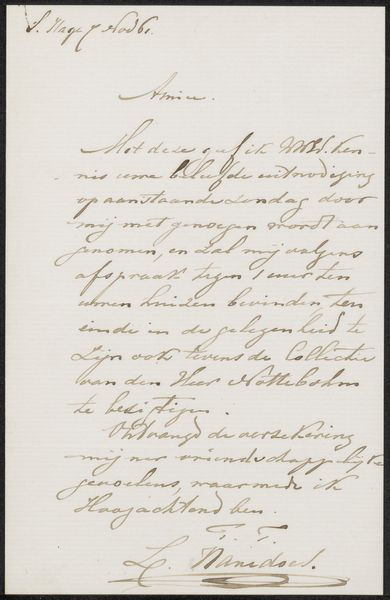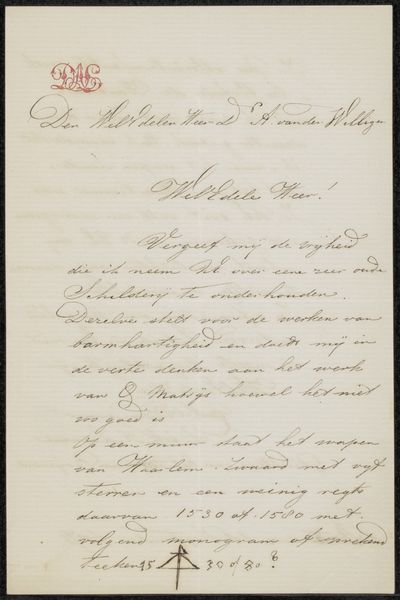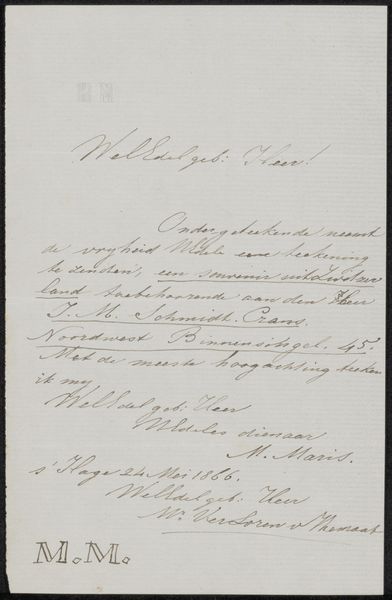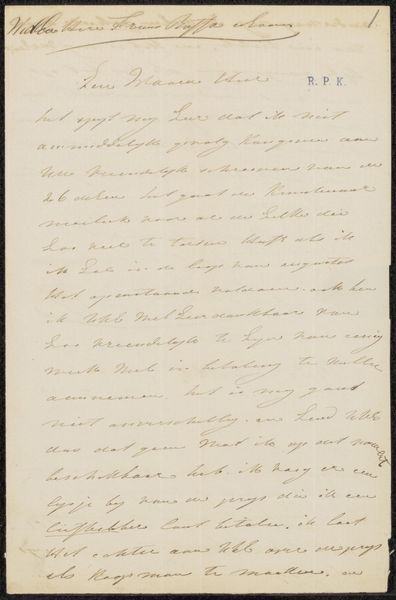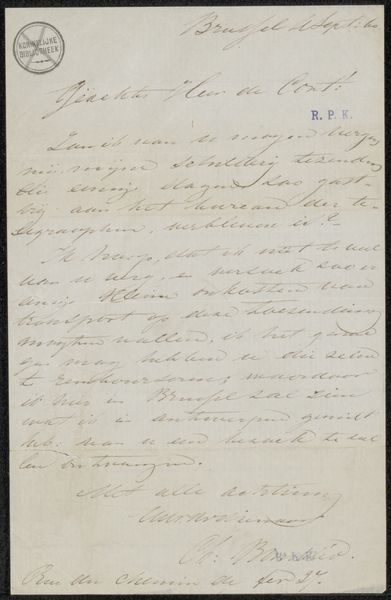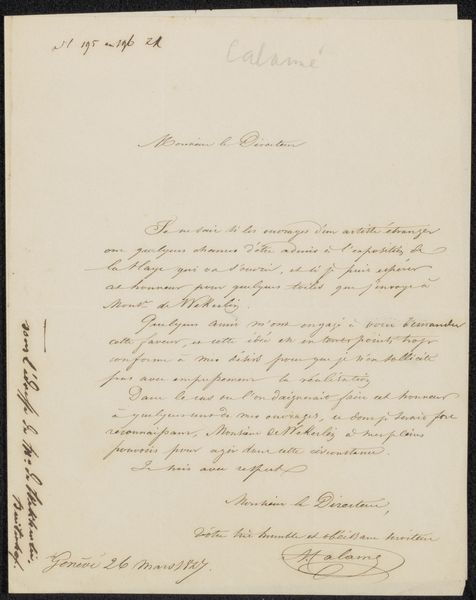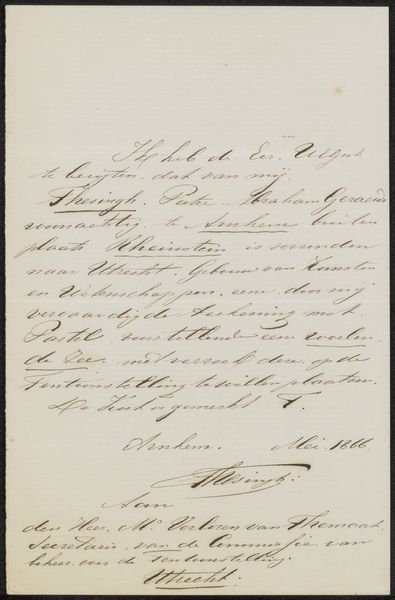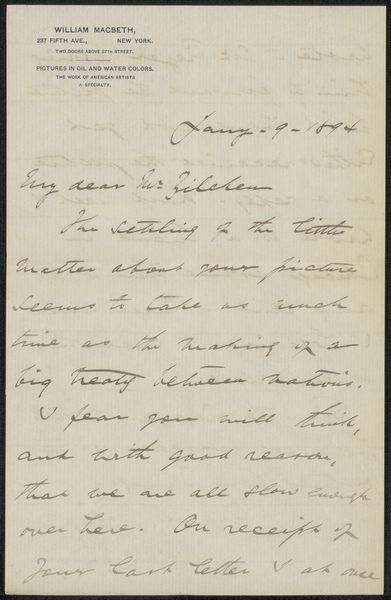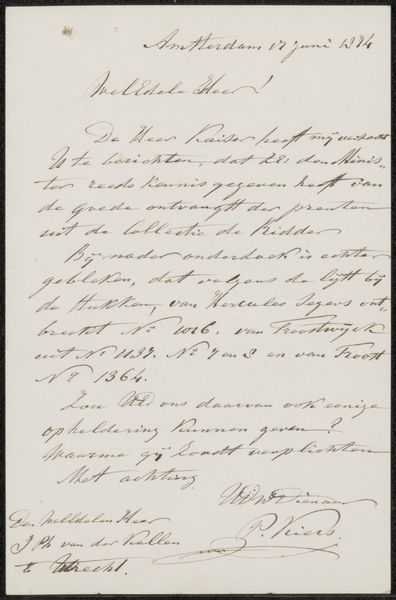
Copyright: Rijks Museum: Open Domain
Editor: We're looking at "Brief aan anoniem," or "Letter to Anonymous," possibly from 1895, by Hendrik Jacobus Scholten. It's pen and ink on paper, a drawing but also a piece of calligraphy. What strikes me most is the contrast between the personal nature of a handwritten letter and its unknown recipient. What do you make of this piece? Curator: I see a fascinating interplay of materiality and social context. The paper and ink—the very stuff of communication—become charged when we consider their role in a specific historical moment. The "anonymous" aspect is key. Who was the intended recipient? Was it really meant for only one reader? The labor involved in meticulously crafting such a letter with pen and ink points to a specific set of social relations and the value placed on written correspondence. The absence of a known recipient raises questions about consumption, how objects acquire cultural worth. What's not seen can often be more telling. Editor: So, you're saying the materials and how they were used hint at a larger story about communication and value in that time? Curator: Precisely! Consider the Romantic influences: the penmanship leans towards artistry and contrasts with the efficiency of the modern, arguably more alienated, modes of industrial printing. It wasn’t a typed-up note. It demanded craftsmanship. This tells us about both the available tools of writing and also something deeper. Editor: That makes a lot of sense. I initially saw the anonymity as a simple mystery, but now I appreciate how it highlights broader ideas of labor, social status, and consumption. Thanks for sharing that point of view. Curator: Likewise. I hadn’t initially focused so much on that initial gut reaction as an indication of deeper structural arrangements.
Comments
No comments
Be the first to comment and join the conversation on the ultimate creative platform.
